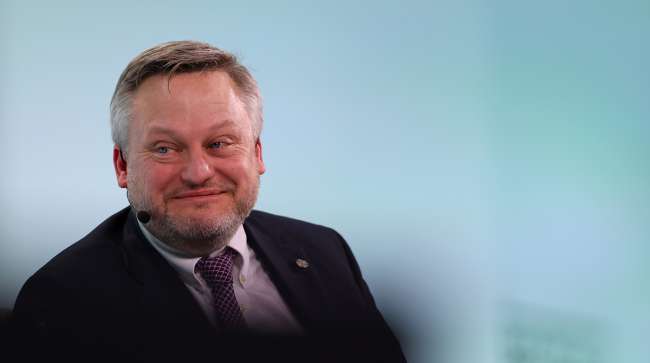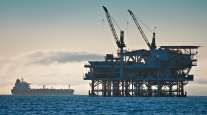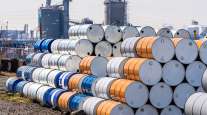Bloomberg News
BP Optimistic About US Energy Future Under Trump

[Stay on top of transportation news: Get TTNews in your inbox.]
BP Plc anticipates strong growth in the U.S. as President-elect Donald Trump improves regulations on the oil and gas industry just as artificial intelligence boosts energy demand.
“We look forward to the Trump presidency,” BP CEO Murray Auchincloss said at the Energy Intelligence Forum in London on Nov. 25. “We think this is a strong chance to help the U.S. get back to putting construction forward, getting regulatory reform in place, getting faster permitting.”
While BP is based in London, more than half of its assets and cash flows are in the U.S., and Auchincloss was bullish about the company’s output there through 2030. Trump said repeatedly in the election campaign that he wanted to accelerate the growth of oil and gas output and curb regulations.
Not every U.S. oil major has signed up fully to Trump’s agenda. Exxon Mobil Corp., BP’s biggest American rival, has publicly lobbied the president-elect to remain part of the Paris climate agreement. When asked about that, Auchincloss demurred and reiterated his optimism about regulatory reforms.
Want more news? Listen to today's daily briefing above or go here for more info
Still, global oil demand continues to surprise BP to the upside and Auchincloss said he expects strong growth in global consumption in the next five to 10 years. BP expects North American natural gas demand to expand by 20% to 30% this decade and sees opportunities to partner with energy-hungry AI firms known hyperscalers, Auchincloss said. BP is also using AI in its own engineering, marketing and refining operations, and the CEO said he is “surprised at how fast and effective” the technology can be.
In the last few years, BP and its U.S. peers have taken a different strategy to the transition to low-carbon energy, focusing on specific areas that they say complement their core businesses such as carbon capture and sequestration. Meanwhile, BP has ventured further into areas such as solar and wind power.
John Elliott of Load One demonstrates how onboard video combined with AI-enabled analytics can transform fleet safety. Tune in above or by going to RoadSigns.ttnews.com.
The depth of experience at BP’s trading business means it can do more in these areas than its U.S. rivals, Auchincloss said.
“We have a bit more to offer through our trading business and so we have a few more integrated areas that we can pull in based on what our customer needs are,” Auchincloss said. “But I do see these things coexisting together. Who else is going to help nations de-carbonize?”
Auchincloss sees opportunities across biofuels, electric vehicles and hydrogen. The company expects a new hydrogen site in the U.K. to be given the go-ahead soon, he added, which would be the company’s third such project.





